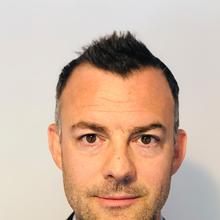Researchers find children with 'Wobbly eye' unable to recognise faces

Researchers in Southampton have discovered children who suffer from eye movement disorder nystagmus – known as ‘wobbly eye’ – struggle to recognise faces but not other objects.
It is hoped the novel finding, which was made following a study led by Jay Self and his team at Southampton Children’s Hospital, will lead to the development of more accurate diagnostic tests and better support for patients. Mr Jay Self is also Associate Professor and Consultant Ophthalmologist at the University of Southampton.
Nystagmus causes the eyes to ‘wobble’ and creates strobe vision, which makes it difficult to see moving objects, recognise familiar faces or perform everyday activities such as playing with toys and friends.
Although the condition, which affects around one in 1,500 people in the UK, can develop in later life, it is more commonly found in babies and young children – known as congenital nystagmus – and can be caused by many different underlying conditions.
The study, carried out by medical student Shinn Tan, in collaboration with the psychology team at the University of Southampton and clinicians in Cardiff and Plymouth, compared how children with and without nystagmus look at faces using an innovative infrared eye-tracking device.
Children were shown two different images on a computer screen at the same time while the Eyelink 1000 Plus analyser used infrared light reflected from the cornea of their eye to measure the time spent looking at each image.
When presented with a black and white checkerboard pattern and a plain grey panel, all children spent longer looking at the distinctive checkerboard and seemed to identify it very quickly – as expected by the clinicians.
However, when shown photos of their own mother's face and that of another woman, children without nystagmus spent longer looking at their mother and found their face very quickly, while those with the condition looked at both faces for the same length of time and seemed to struggle to identify their own mother’s face.
“Nystagmus is an extremely complicated condition, therefore, testing and diagnosing it has proved very challenging, so we are constantly looking for ways to improve and enhance methods of diagnosis, as well as increase the support available to patients,” explained Mr Self, who is associate professor of ophthalmology at the University of Southampton.
“These results indicate that children with nystagmus may have specific difficulty recognising faces or adopt different ways of looking at faces – something that’s rarely detected by standard eye tests.”
He added: “The findings could provide the basis of a more accurate diagnosis of nystagmus severity and measure of the efficacy of trial treatments, as well as improved social support and understanding for patients.”
The study was funded by the Nystagmus Network.
Press release issued by University Hospital Southampton NHS Foundation Trust
